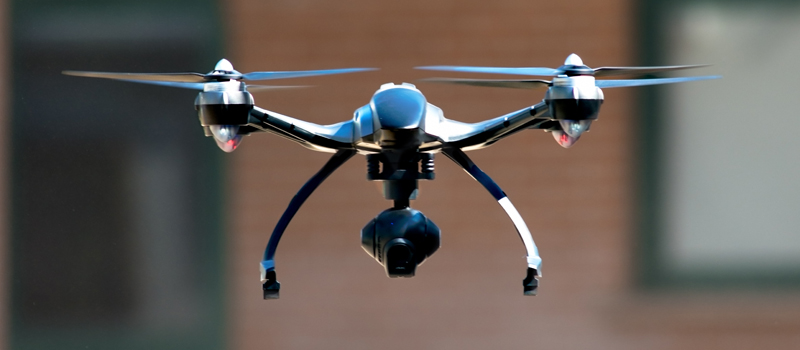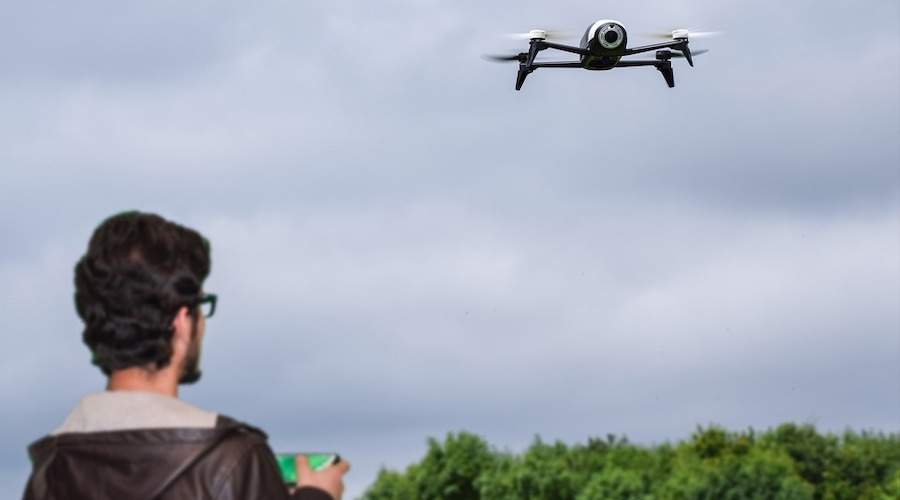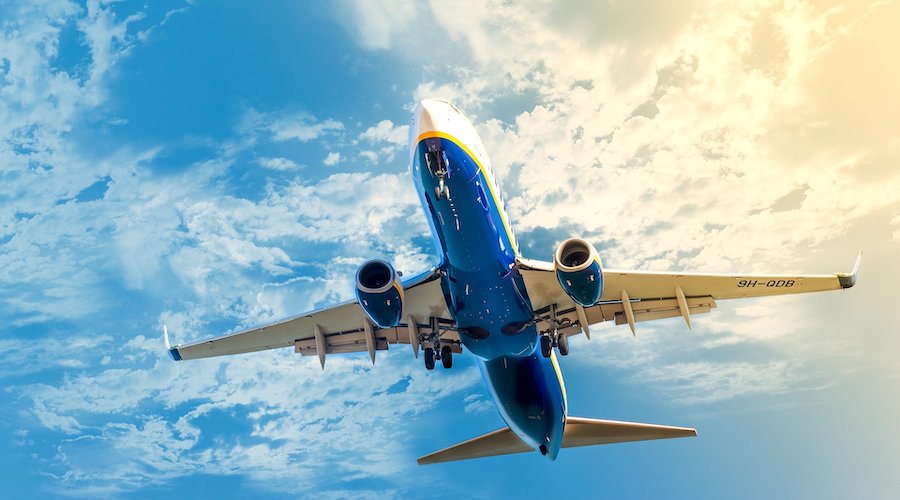-
Applicability of the new rules
-
What are the new restrictions on flying over people?
-
How will we know which drones fall under each category?
- Means of Compliance (MOC)
- Declaration of Compliance (DOC)
-
What are the drone categories and their corresponding restrictions?
- CATEGORY 1 DRONES
- CATEGORY 2 DRONES
- CATEGORY 3 DRONES
- CATEGORY 4 DRONES
-
When will compliance with the new rules start?
-
How about flight over moving vehicles?
-
A few important definitions
- Open-air assembly
- Sustained flight
- Exposed moving parts
-
Final thoughts
Along with the FAA’s announcement of the final ruling on Remote ID, they also made several amendments to already existing rules. Some of the most important amendments were for Part 107 – specifically, the restrictions on flying drones over people and moving vehicles. This has already been the topic of a previous NPRM and is now progressing towards full-scale implementation.
In this article, we will attempt to summarize and clarify these new rules. A key idea to remember is that these new rules were established in the context of Remote ID, which means that Remote ID will play a role in how they will be implemented. Strap in and grab a drink because there is going to be a lot of material to digest.
Applicability of the new rules
Before we go into the details of the new rules on flying over people and moving vehicles, it’s important to take note that these only apply to those flying under Part 107. For recreational drone pilots flying under Section 44809, the old rules still apply. This means that avoiding flying over non-participants or moving vehicles is still highly recommended when flying drones for fun.
What are the new restrictions on flying over people?
The new rules on flying over people and moving vehicles are a bit more nuanced as there isn’t a single set of restrictions that applies to all drones. Instead, drones are now classified into four categories, each with specific qualifications and corresponding restrictions. We will delve into how each category is defined later on.
How will we know which drones fall under each category?
The burden of identifying the drones that fall under each category will fall on the drone manufacturers. Once these standards have been implemented, each drone should have documentation that declares its category. The FAA will also maintain a list of drone models for each category as a guide for buyers.
There are two important documents that drone manufacturers need to accomplish:
Means of Compliance (MOC)
The MOC is a document that describes how a drone manufacturer will prove that their drone meets the FAA’s requirements for each category. This will likely involve a series of tests and the analysis and inspection of results. The MOC will be sent to the FAA for review and approval
Declaration of Compliance (DOC)
Once an MOC has been approved and the drone manufacturer has complied with the prescribed standards, they will then submit the DOC. This is a document that lists down which drone models were manufactured according to the standards outlined in the MOC. The DOC will also include a list of serial numbers of these drones for the FAA to countercheck with Remote ID data.
Take note that this does not necessarily mean that only newly manufactured drones can comply with the new standards. After all, Remote ID only needs radio frequency communication to work – a technology that has already been built into most modern drones. Nothing is set in stone yet, but we don’t expect drones launched in the last two or three years to have problems in compliance.
What are the drone categories and their corresponding restrictions?
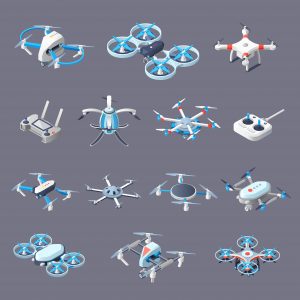
The main qualifier for drone pilots to determine how they can fly over people is the category under which their drones belong to. To streamline this discussion, we’ll go over each category in sequence, detailing their requirements, standards, and corresponding restrictions.
Over the course of this discussion, several terms will be used which will need to be defined at an official scope. These definitions are provided under a separate section.
CATEGORY 1 DRONES
Requirements:
- All drones that weigh less than 0.55 lbs. including any accessories or payload
- No exposed rotating parts that can cause laceration
- No requirements for safety defects
- No injury limits
- Do not require an MOC or DOC or any corresponding label
Restrictions:
- Category 1 drones are allowed to fly over people anywhere as long as they comply with all requirements
- Category 1 drones with no Remote ID are only allowed non-sustained flight over an open-air assembly
- Sustained flight over an open-air assembly is allowed for Category 1 drones that have Remote ID
Category 1 drones are the smallest and lightest drones, often described as ‘toy drones’ or ‘mini-drones’. The FAA deems these drones to be too small to cause any serious injury to people on the ground. Category 1 drones can fly over people regardless of location. However, sustained flight over an open-air assembly will still require an active Remote ID broadcast.
CATEGORY 2 DRONES
Requirements:
- Drones that weigh less than 55 lbs
- No exposed rotating parts that can cause laceration
- Required to have no safety defects
- An injury limit of 11 ft-lb of kinetic energy
- Must come with an MOC and DOC and must be labeled as a Category 2 drone
Restrictions:
- Category 2 drones are allowed to fly over people anywhere as long as they comply with all requirements
- Category 2 drones with no Remote ID are only allowed non-sustained flight over an open-air assembly
- Sustained flight over an open-air assembly is allowed for Category 2 drones that have Remote ID
Most prosumer drones will likely fall under Category 2. A new concept introduced in this category’s description is that of an “injury limit” of 11 ft-lb. This describes how much kinetic energy the drone will carry should it crash into the ground and is a rough approximation of how serious an injury it may cause.
Proving that a drone falls under Category 2 will be the responsibility of the drone manufacturers who must also file an MOC and DOC with the FAA.
The flight restrictions for Category 2 drones are virtually the same as that of Category 1 drones. Again, these drones can fly over people regardless of location. Should the pilot need to do sustained flight over an open-air assembly, then they will need to fly a drone with Remote ID capabilities.
CATEGORY 3 DRONES
Requirements:
- Drones that weigh less than 55 lbs
- No exposed rotating parts that can cause laceration
- Required to have no safety defects
- An injury limit of 25 ft-lb of kinetic energy
- Must come with an MOC and DOC and must be labeled as a Category 3 drone
Restrictions:
- Category 3 drones are only allowed to fly over in closed or restricted sites and subject to limitations
- Category 3 drones are not allowed to do sustained flight over an open-air assembly outside of closed or restricted sites
- Within closed or restricted sites, any operations that will have Category 3 drone flying over people can proceed only if all humans are on notice that a drone might fly over them
- Within closed or restricted sites, Category 3 drones are allowed sustained flight over people given two other conditions:
- The people are directly participating in the activity, OR;
- The people are under a covered structure or inside a stationary vehicle
As you can see, the restrictions for Category 3 drones are a bit stricter. This is perfectly understandable as Category 3 drones are the much larger ones typically used by professionals. The cutoff for the injury limit of a Category 3 drone is a much higher 25 ft-lbs. of kinetic energy. Again, a drone manufacturer must provide an MOC and DOC that their drone falls under Category 3.
If you’re flying a Category 3 drone, you cannot fly it over people unless you are inside a closed or restricted site. Even within such a site, any type of flight over people can only be done if the people are informed that there could be a drone flying over them.
In the case of sustained flight, the old rules on flight over people will prevail – allowed only for those who are direct participants or if they are otherwise protected by a covered structure.
CATEGORY 4 DRONES
Requirements:
- Must have Part 21 Airworthiness Certificate
Category 4 drones are those that are treated by the FAA as they were standard manned aircraft. Thus, they need to have an Airworthiness Certificate as well as documented systems for maintenance, inspection, and alteration. The Airworthiness Certificate will take the place of the MOC and DOC.
The rules for Category 4 drones are not likely to be relevant to most drone pilots. These are likely the type of drones that will be used by corporations, should enterprise-level drone use become more common.
When will compliance with the new rules start?
The FAA does not specify exactly when compliance with these new rules will start, although we imagine that drone pilots have the option of complying as soon as the Remote ID rule is in effect. Realistically speaking, however, compliance will largely depend on drone manufacturers.
- Category 1 drones do not require an MOC or DOC to fly over people. However, they will still need Remote ID capabilities for sustained flight. By March 2021, Category 1 drones may be able to do non-sustained flight over people.
- Both Category 2 and Category 3 drones will require an MOC and DOC to be identified as such. Drone manufacturers will still need to work on this and there’s no way to tell how long testing and analysis will take. Optimistically speaking, we might find out which drones are Category 2 or 3 by the end of 2021.
In the meantime, we advise sticking to the old Part 107 rules on flying over people.
How about flight over moving vehicles?
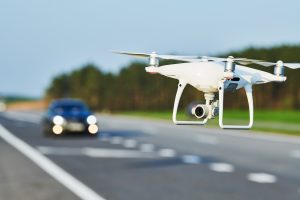
The new rules on flying drones over moving vehicles are much simpler. In a nutshell, flight of Category 1, 2, or 3 drones over moving vehicles is allowed under either one of two conditions:
- Flight is done within a closed or restricted site and everyone inside the vehicle in on notice that a drone may fly over them; OR
- Only non-sustained flight is done
The FAA further clarifies that a vehicle is any means of transportation, motorized or not.
With this new rule, having a drone fly over a busy highway is no longer a problem so long it does not linger over any vehicle. This alone is already a huge improvement over the old rules and one that commercial drone pilots will surely appreciate.
A few important definitions
To wrap up this discussion, let’s go into technical definitions of some of the new terms that the final ruling has introduced.
Open-air assembly
The concept of an ‘open-air assembly’ is important on account of how frequently the term was mentioned in the rules for flight over people. Frustratingly, the FAA has not provided a specific definition for the term. Reminiscent of their approach to defining ‘sparsely populated’ areas, an open-air assembly will be assessed on a case-to-case basis.
According to the text of the final ruling, cases will be “evaluated by considering the density of people who are not directly participating in the operation of the small unmanned aircraft and the size of the operational area. Such assemblies are usually associated with public spaces”.
More helpfully, the FAA has cited good examples of open-air assemblies including sporting events, concerts, parades, protests, political rallies, community festivals, parks, and beaches during certain events.
The final ruling also provides situations that are less likely to be considered open-air assemblies. The list includes shopping centers, athletes participating in an event without spectators, individuals, or small groups taking leisure in a park or beach, individuals walking or riding along a bike path.
Sustained flight
Sustained flight is another qualifier for allowing flight over people and moving vehicles under certain conditions. It refers to flight where the drone lingers above a person or vehicle. Hovering is a very good example but flying back and forth or circling over an assembly are also considered under sustained flight.
According to the ruling, a brief or one-time transition over a portion of an assembly as part of a point-to-point operation is not considered sustained flight. The justification is that there is very little chance of the drone crashing and causing injury when doing brief flights over an assembly.
Exposed moving parts

For all drone categories that are allowed to fly over people, it is important they do not have moving parts that are exposed and can cause laceration injuries. Naturally, the easiest culprit to identify are the drone’s propellers. It is then up to the drone pilot or drone manufacturer to come up with ways to comply with this new requirement.
The easiest (and cheapest) way for compliance is to install propeller guards on the drone. These are snap-on accessories that provide some measure of protection for injuries from the rotating propellers.
However, using propeller guards can be an issue for Category 1 drones that weigh just below the threshold. The DJI Mavic Mini and the Mini 2 come to mind. Both these drones are just a hair below the 0.55-lb. weight limit for Category 1 drones and installing propeller guards on them will put them well over.
Another option worth considering is to design drones to have automatic motor stop systems. This means that the motors of the propellers will stop running the moment the drone senses that it’s crashing. Some drones already available today already have a similar feature, while others may require upgrades in both hardware and firmware.
Final thoughts
A huge part of the recently announced final ruling on Remote ID are the amendments on the currently existing rules on drone flight over people and moving vehicles. This has been a long time coming, especially considering how many waiver requests the FAA has received for this specific Part 107 provision.
With the relaxed rules, commercial drone pilots should have more freedom to fly over the circumstances mentioned in the ruling. However, we’ll still have to wait for some time before drone manufacturers can comply with the documentary requirements. Until then, it’s best for us to continue avoiding having our drones fly directly over people.
